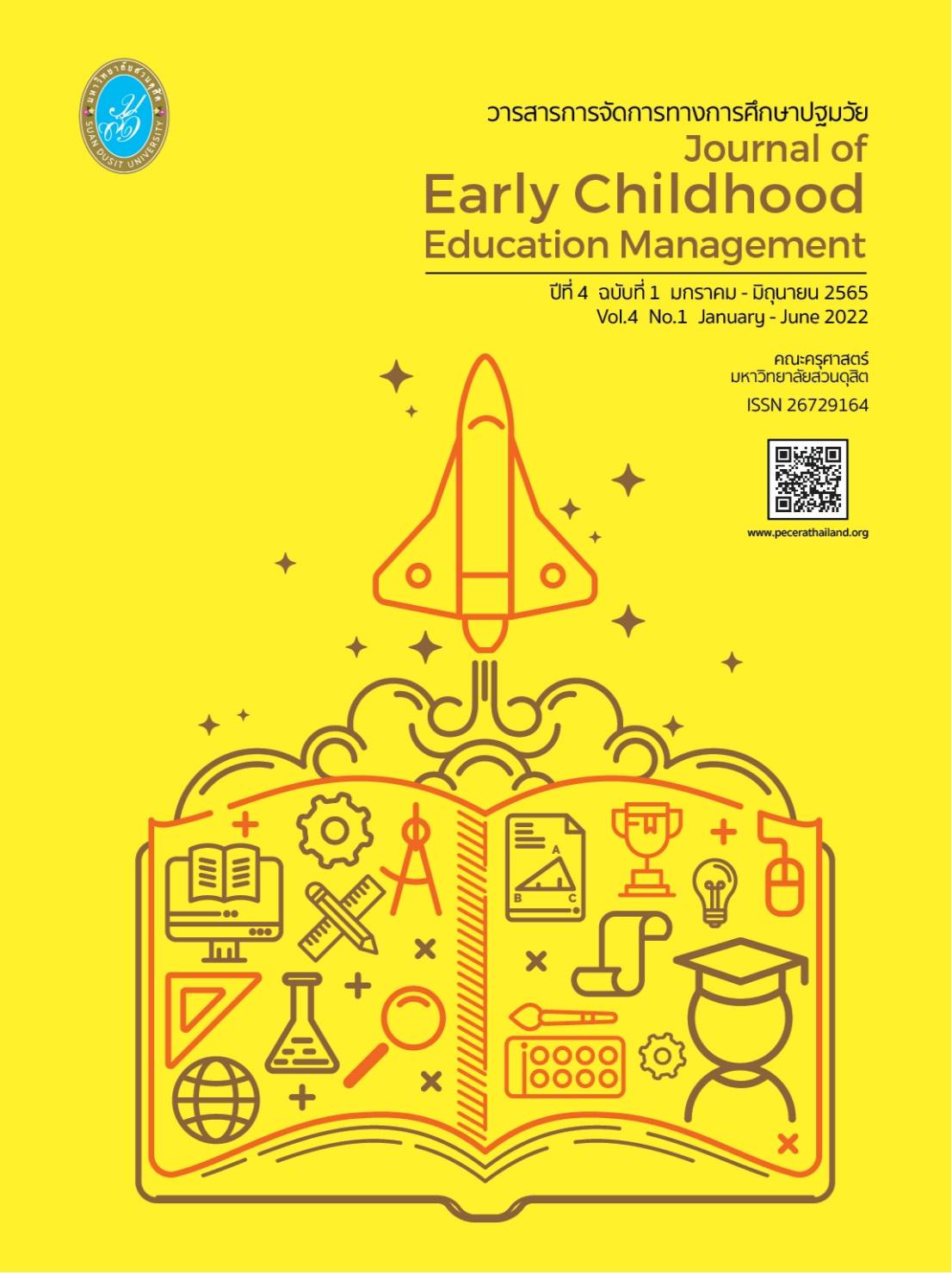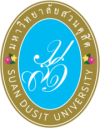การเปลี่ยนผ่านสำหรับนักเรียนออทิสติกมีความสำคัญเพียงใด
คำสำคัญ:
การเปลี่ยนผ่าน, นักเรียนออทิสติก, แผนการเปลี่ยนผ่านเฉพาะบุคคลบทคัดย่อ
นักเรียนออทิสติกเป็นกลุ่มบุคคลที่มีความบกพร่องด้านสังคม การสื่อสาร ด้านพัฒนาการและการเข้าใจเรื่องสัมพันธภาพทางสังคมของตนเองและยังมีปัญหาในการปรับตัวและการเตรียมความพร้อมด้านต่าง ๆ เมื่อเข้าสู่สภาพแวดล้อมใหม่ จึงทำให้เกิดภาวะเครียด หงุดหงิด อึดอัด วิตกกังวลและกลัวอย่างไร้เหตุผล และทำให้นักเรียนออทิสติกอยู่ในสังคมได้ยาก ซึ่งเป็นปัญหาที่ควรได้รับการช่วยเหลือ เพราะจะส่งผลกระทบต่อตัวเด็ก ครอบครัวและสังคมได้ โดยเฉพาะหากเด็ออทิสติกที่เรียนในโรงเรียนเรียนรวมมักพบปัญหาในการเล่นกับเพื่อน การทำกิจกรรมต่าง ๆ ในชั้นเรียน และแม้กระทั่งการเปลี่ยนผ่านชั้นเรียนหรือเปลี่ยนโรงเรียน ซึ่งครู ผู้ปกครองและผู้ที่เกี่ยวข้องควรมีส่วนช่วยกันอย่างเป็นระบบและมีรูปแบบการเปลี่ยนผ่านสำหรับนักเรียนออทิสติกที่ชัดเจนเพื่อเป็นการเตรียมความพร้อมและความร่วมมือกันของทุกฝ่ายและเพื่อให้นักเรียออทิสติกสามารถเปลี่ยนผ่านและเรียนในระดับชั้นที่สูงขึ้นหรือในโรงเรียนใหม่ได้อย่างราบรื่นและมีความสุข ซึ่งบทความนี้จะกล่าวถึง การจัดกระบวนการเปลี่ยนผ่านสำหรับนักเรียนพิการในต่างประเทศและในประเทศไทย รูปแบบการเปลี่ยนผ่านสำหรับนักเรียนพิการในต่างประเทศ การเปลี่ยนผ่านเพื่อเข้าสู่โรงเรียนระดับ
ต่าง ๆ ผู้ที่เกี่ยวข้องในการจัดกระบวนการเปลี่ยนผ่านสำหรับนักเรียนออทิสติก ขั้นตอนในการจัดกระบวนการเปลี่ยนผ่านสำหรับนักเรียนออทิสติก เพื่อให้เป็นข้อมูลในการจัดการเปลี่ยนผ่านสำหรับผู้ที่เกี่ยวข้องต่อไป
เอกสารอ้างอิง
เกตอรอินท์ พิทักษ์โคชญากุล. (2558). การพัฒนารูปแบบการบริหารการเปลี่ยนผ่านสำหรับเด็กที่มีความ
ต้องการพิเศษจากการให้บริการช่วยเหลือระยะแรกเริ่มสู่ระบบโรงเรียน. ปริญญาดุษฎีนิพนธ์, บัณฑิตวิทยาลัย มหาวิทยาลัยราชภัฎสวนดุสิต. กรุงเทพมหานคร.
คณะกรรมการสงเสริมและพัฒนาคุณภาพชีวิตคนพิการแหงชาติ. (2560). แผนพัฒนาคุณภาพชีวิตคนพิการ
แห่งชาติฉบับที่ 5 พ.ศ. 2560–2564.
งานด้านข้อมูลสารสนเทศ กลุ่มแผนและงบประมาณ สำนักบริหารงานการศึกษาพิเศษ. (2561). ระบบการ
จัดการข้อมูลโรงเรียนเรียนรวม : ออนไลน์:
http://specialbasic.specialset.bopp.go.th/specialbasic/home.php เข้าถึงเมื่อ 25 พฤศจิกายน 2564.
จิราภรณ์ อักษรนู และสิริลักษณ์ โปร่งสันเทียะ. (2556). การศึกษาความสามารถในการปรับตัวสู่
สภาพแวดล้อมใหม่ของเด็กออทิสติก โดยใช้แผนการเปลี่ยนผ่านเฉพาะบุคคลจากบ้านสู่ศูนย์การศึกษาพิเศษประจำจังหวัด. เอกสารประกอบการประชุมวิชาการระดับชาติ การวิจัยทางการศึกษาพิเศษ ครั้งที่ 4. มหาวิทยาลัยราชภัฏนครราชสีมา. หน้า 186-203.
ธวัลย์รัตน์ เสียมกระโทก. (2556). การศึกษาความพร้อมเพื่อการเปลี่ยนผ่านของนักเรียนออทิสติกจาก
ห้องเรียนคู่ขนานสำหรับบุคคลออทิสติก สู่ห้องเรียนปกติ จากการใช้แผนการเปลี่ยนผ่านเฉพาะ
บุคคล. เอกสารประกอบการประชุมวิชาการระดับชาติ การวิจัยทางการศึกษาพิเศษ ครั้งที่ 4.
มหาวิทยาลัยราชภัฏนครราชสีมา. หน้า 229-240.
ประภาวรรณ พุมมา. (2556). การศึกษาความพร้อมเพื่อการเปลี่ยนผ่านของบุคคลออทิสติก จากการให้บริการ
ช่วยเหลือในระยะแรกเริ่มของศูนย์การศึกษาพิเศษสู่ห้องเรียนคู่ขนาน สำหรับบุคคลออทิสติก โดยแผนการเปลี่ยนผ่านเฉพาะบุคคล. บุคคล. เอกสารประกอบการประชุมวิชาการระดับชาติ การวิจัยทางการศึกษาพิเศษ ครั้งที่ 4. มหาวิทยาลัยราชภัฏนครราชสีมา. หน้า 204-216.
พรพรรณ์ สมบูรณ์. (2552). รูปแบบการบริหารการเปลี่ยนผ่านจากโรงเรียนร่วมสู่การทำงานของนักเรียน
พิการระดับมัธยมศึกษา.ปรัชญาดุษฎีบัณฑิต สาขาการบริหารการศึกษา บัณฑิตวิทยาลัย มหาวิทยาลัยศิลปากร.
พวงประภา ไข่ชัยภูมิ และสิริลักษณ์ โปร่งสันเทียะ. (2556). ศึกษาความพร้อมเพื่อการเปลี่ยนผ่านของนักเรียน
ออทิสติกจากระดับ ประถมศึกษาสู่ระดับมัธยมศึกษาจากการใช้แผนการเปลี่ยนผ่านเฉพาะบุคคล .เอกสารประกอบการประชุมวิชาการระดับชาติ การวิจัยทางการศึกษาพิเศษ ครั้งที่ 4. มหาวิทยาลัยราชภัฏนครราชสีมา. หน้า 241-251.
พระราชบัญญัติการศึกษาแห่งชาติ พุทธศักราช 2542 (ฉบับที่ 2).
พระราชบัญญัติการจัดการศึกษาสำหรับคนพิการ พุทธศักราช 2551 มาตรา 5.
พระราชบัญญัติส่งเสริมและพัฒนาคุณภาพชีวิตคนพิการ พุทธศักราช 2550 มาตรา 20.
รัฐธรรมนูญแห่งราชอาณาจักรไทย พุทธศักราช 2560 มาตรา 49.
สํานักบริหารงานการศึกษาพิเศษ สำนักงานคณะกรรมการการศึกษาขั้นพื้นฐานแห่งชาติ กระทรวงศึกษาธิการ.
(2554). นโยบายปฏิรูปการศึกษาสําหรับคนพิการในสตวรรษที่ 2 (พ.ศ.2552 –2561).
กระทรวงศึกษาธิการ.
สำนักงานคณะกรรมการการอุดมศึกษา. (2555). การให้บริการสนับสนุนนักเรียนพิการในระยะเปลี่ยนผ่านจาก
มัธยมศึกษาสู่อุดมศึกษา. เอกสารประกอบการอบรมหลักสูตรการพัฒนาศักยภาพบุคลากรที่เกี่ยวข้องกับการจัดการศึกษาสำหรับคนพิการในระดับอุดมศึกษา. สำนักงานคณะกรรมการการอุดมศึกษา สำนักส่งเสริมและพัฒนาศักยภาพนักศึกษา กลุ่มส่งเสริมการเรียนรู้ประสบการณ์กับชุมชน.
สำนักงานปลัดกระทรวงศึกษาธิการ กระทรวงศึกษาธิการ. (2559). แผนพัฒนาการศึกษาของ
กระทรวงศึกษาธิการ ฉบับที่ 12 (พ.ศ. 2560–2564). กระทรวงศึกษาธิการ.
สำนักงานเลขาธิการสภาการศึกษา กระทรวงศึกษาธิการ. (2555). นโยบายปฏิรูปการศึกษาสําหรับคนพิการใน
ทศวรรษที่สอง (พ.ศ. 2552-2561). กรุงเทพฯ: สำนักนโยบายและแผนการศึกษา.
สำนักงานเลขาธิการสภาการศึกษา กระทรวงศึกษาธิการ. (2560). แผนการศึกษาแห่งชาติ พ.ศ. 2560 –
กรุงเทพฯ: สำนักนโยบายและแผนการศึกษา.
Boehm, T. L., Carter, E. W., & Taylor, J. L. (2015). Family Quality of Life During the Transition to
Adulthood for Individuals with Intellectual Disability and/or Autism Spectrum Disorders. America Journal on Intellectual and Developmental Disabilities,120(5), 395–411.
Blackmon, D. et.al. (2008). Transition to Adult Living: An Information and Resource Guide.
California Department of Education.
Bridges, W. & Bridges, S. (2017). Managing Transitions, 25th anniversary edition: Making the
Most of Change.
Bridges, W. (2019). Managing Transitions: Making the Most of Change. Revised anniversary
edition, 2019.
Catherine, F. (2011). Expectations and the Post Transition of Young Adults with an Autism
Spectrum Disorder to Post-Secondary Education. A Dissertation Presented in Partial Fulfillment of the Requirements for the Degree Doctor of Philosophy. ARIZONA STATE.
Chantelle, M., Vivian, H. & Elizabeth, P. (2017). The primary-to-secondary school
transition for children on the autism spectrum: A multi-informant mixed-methods study. Autism & Developmental Language Impairments, (2): 1–18.
Davis, M. (2016). Success beyond high school: effective transition to college for students
with ASD. A Dissertation Submitted in Partial Fulfilment of the Requirement for the
Degree of Doctor of Philosophy in the Graduate School of the Texas Women’s University. USA.
Donald, W. et.al. (2014). DSM-5® Guidebook: The Essential Companion to the
Diagnostic and Statistical Manual of Mental Disorders, Fifth Edition: Vol. Fifth edition. American Psychiatric Association Publishing.
Flexer, R. W., Baer, R. M., Luft, P. & Simmons, T. J. (2013). Transition Planning for Secondary
Students with Disabilities. Fourth Edition: Pearson Education.
Jacobs & Elizabeth, J. (2017). Secondary Special Education Teachers and Transition
Specialists: Collaborative Efforts. A Dissertation Presented in Partial Fulfillment of the Requirements for the Degree Doctorate of Education. Grand Canyon University, Phoenix, Arizona.
Kelly, A. M. (2015). Assets and Access: An Examination of Transition from High School to
College. Department of Counseling, Developmental, and Educational Psychology Applied Developmental and Educational Psychology. Boston College Lynch School of Education. USA.
Kohler, P. D. (1996). Preparing youth with disabilities for future challenges: A taxonomy for
transition programming. In P.D. Kohler (Ed.), Taxonomy for Transition Programming: Linking research to Practice Champaign IL: University of Illinois, Transition Research Institute, 1-62.
Kohler, P.D. (1998). Implementing a transition perspective of education: A comprehensive
approach to planning and delivering secondary education and transition services. Quoted in F.R. Rush and J.G. Chadsey (Eeds). “Beyond high school: Transition from school to work.” New York: Wadsworth Publishing.
Kohler, P.D. (2003). Transition-Focused Education: Foundation for the Future. The Journal of
Special Education, 37(3) 174–183
Kohler, P. D., Gothberg, J. E., Fowler, C., & Coyle, J. (2016). Taxonomy for transition programming 2.0: A model for planning, organizing, and evaluating transition education, services, and programs. Western Michigan University. Available at www.transitionta.org.
Kohler, P. D., Gothberg, J. E., & Coyle, J. L. (2017). Using the Taxonomy for Transition
Programming 2.0 to guide transition education. In A.L. Ellis (Ed.), Transitioning children with disabilities: From early childhood through adulthood. Sense Publishers.Google Scholar.
Landmark, L. J. & Zhang, D. (2010). Substantiated Best Practices in Transition: Fifteen
Plus, Years Later. Career Development for Exceptional Individuals. 33(3), 165–176.
Li, Y.J., Bassett, D., & Hutchinson, S. (2009). Secondary special educators’ transition
involvement. Journal of Intellectual & Developmental Disability, 34(2) 163-172.
Meleis, A.L., Sawyer, L., Im, E., Schumacher, K., & Messias, D. (2014). Experiencing transition: an
emerging middle rage theory. Advances in Nursing Science, 23(1), 12-28.
Richter, M., Popa-Roch, M., & Clément, C., (2019). Successful Transition From Primary to
Secondary School for Students with Autism Spectrum Disorder: A Systematic Literature Review. Journal of Research in Childhood Education, 33(1), 1-17.
Stanford Research Institute International. (1992). What happen Next? Trends in post school
outcomes of youth with disabilities. Washington DC: The office of Special Education Program.
Syed, M., & Seiffge-Krenke, I. (2013). Personality development from adolescence to emerging
adulthood: Linking trajectories of ego development to the family context and identity formation. Journal of Personality and Social Psychology, 104(2), 371–384.
Taylor, J. L. & Seltzer, M. M. (2011). Employment and Post-Secondary Educational
Activities for Young Adults with Autism Spectrum Disorders During the Transition
to Adulthood. Journal of Autism and Developmental Disorders, 41, 566-574.
Topping, K. (2011). Primary secondary transition: Differences between teachers’ and children’s
perceptions. Improving Schools, 14, 268–285.
Tso, M. & Strnadová, I. (2017). Students with autism transitioning from primary to secondary
schools: parents’ perspectives and experiences. International Journal of Inclusive Education, 21(4), 389-403.
U.S. Department of Education. (2009). Individuals with Disabilities Education Improvement Act
of 2004, Public Law No. 108-446, 20 U. S. C. 1400, H. R. 1350. retrieved 25th August, 2018. Available at http://www.ideadata.org.
Wehman, P., Kregel, J., & Barcus, J. M. (1985). From school to work: A vocational transition
model for handicapped students. Exceptional Children, 52(1), 25–37.
Wehmeyer, M. L., & Webb, K. W. (2012). Handbook of adolescent transition education for
youth with disabilities. New York: Routledge.
Wei, X., Wagner, M., Hudson, L., Yu, J. W., & Shattuck, P. (2015). Transition to adulthood:
Employment, education, and disengagement in individuals with autism spectrum disorders. Emerging Adulthood, 3(1), 37-45.
Williamson, R. L., Robertson, J. S., & Casey, L. B. (2010). Using a dynamic systems approach to
investigating postsecondary education and employment outcomes for transitioning students with disabilities. Journal of Vocational Rehabilitation, 33(2), 101–111.
Wisniewski, L. A. , Alper, S., & Schloss, P. (1991). Work-Experience and Work-Study Programs
for Students with Special Needs: Quality Indicators of Transition Services. Career Development for Exceptional Individuals. https://www.semanticscholar.org/paper/Work-Experience-and-Work-Study-Programs-for-with-of-Wisniewski-Alper/31234254baea23043d15b56cef3a6793696eb433
ดาวน์โหลด
เผยแพร่แล้ว
รูปแบบการอ้างอิง
ฉบับ
ประเภทบทความ
สัญญาอนุญาต
ลิขสิทธิ์ (c) 2022 วารสารการจัดการทางการศึกษาปฐมวัย

อนุญาตภายใต้เงื่อนไข Creative Commons Attribution-NonCommercial-NoDerivatives 4.0 International License.
ลิขสิทธิ์ต้นฉบับที่ได้รับการตีพิมพ์ในวารสารการจัดการทางการศึกษาปฐมวัย ถือเป็นกรรมสิทธิ์ของคณะครุศาสตร์ มหาวิทยาลัยสวนดุสิต ห้ามผู้ใดนำข้อความทั้งหมดหรือบางส่วนไปพิมพ์ซ้ำ เว้นแต่จะได้รับอนุญาตอย่างเป็นลายลักษณ์อักษรจากคณะครุศาสตร์ มหาวิทยาลัยสวนดุสิต นอกจากนี้ เนื้อหาที่ปรากฎในบทความเป็นความรับผิดชอบของผู้เขียน ทั้งนี้ไม่รวมความผิดพลาดอันเกิดจากเทคนิคการพิมพ์




